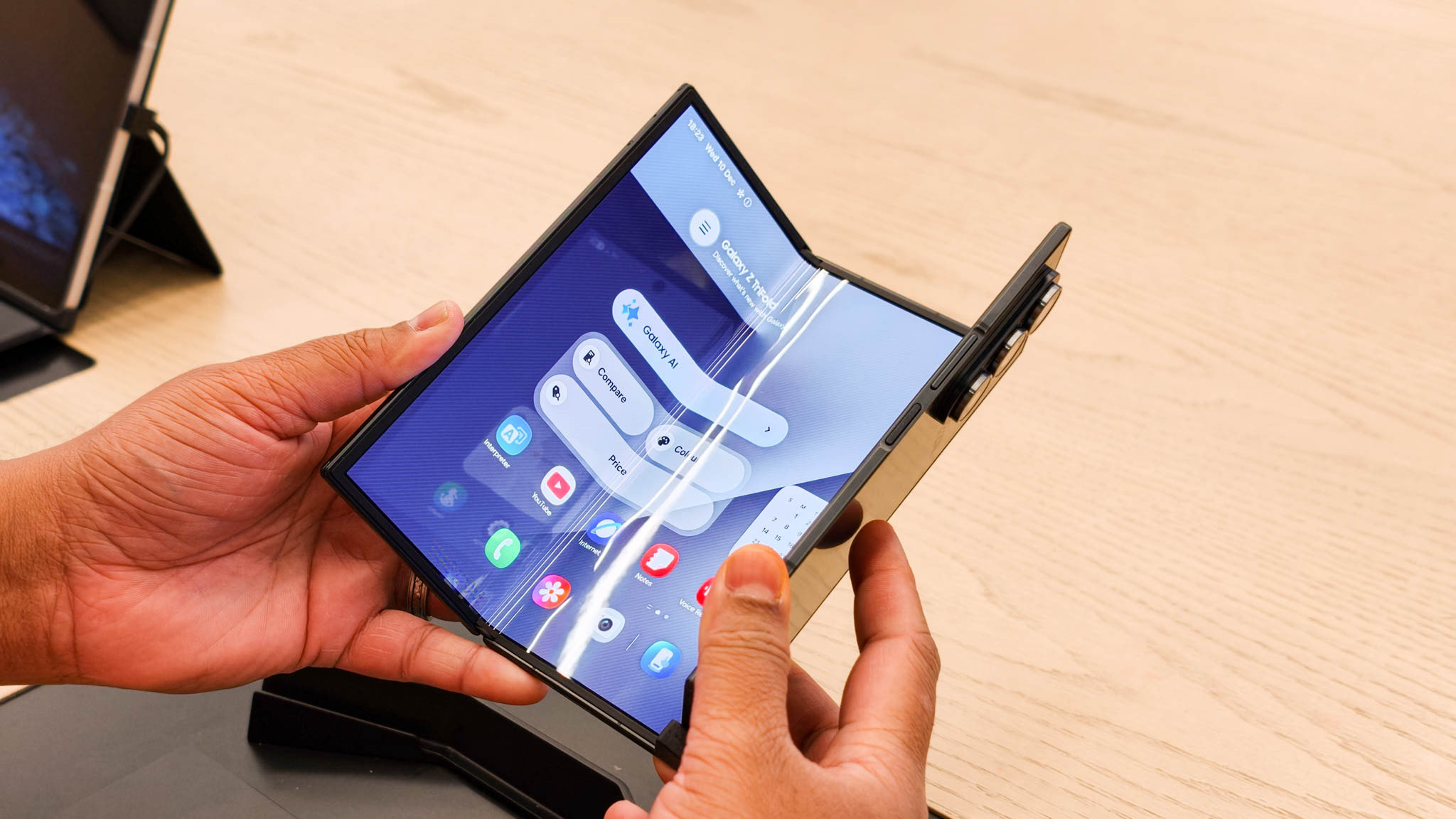Will wireless Bluetooth headphones work on Quest 3 or 3S?
The Quest 3 and 3S connect with Bluetooth devices, but you'll want a wired connection or USB-C dongle for low-latency audio.

Can you use wireless or Bluetooth headphones with the Meta Quest 3?
Both the Meta Quest 3 and Quest 3S support Bluetooth 5.2, enabling you to connect headphones, controllers, mice, keyboards, and other accessories.
As a warning, Bluetooth headphones have awful latency when used with Quest headsets, potentially ruining your immersion playing Quest games. If you want to try anyway, put your headphones or earbuds in pairing mode; then, in-headset, click on the Quick Settings button in the universal menu, select Bluetooth, Scan to find them, then click Pair from the available list.
In Meta's May 2025 update, it added Bluetooth LE Audio support to Quest headsets. If your headphones support this standard, pair them following the steps above; once it's synced, tap an arrow next to the headphones' name, then enable LE Audio mode. In theory, this will lessen Bluetooth latency while gaming or streaming, but Meta warns that when you open a game, there'll be a "brief disconnection and loss of audio while the connection gets reconfigured to low latency mode" before reconnecting.
Why Meta Quest 3 and 3S owners should look into Bluetooth alternatives

Just because you can use Quest 3 Bluetooth headphones doesn't mean you should. The audio-video lag is distracting, and there are several alternatives for both wired and wireless audio.
With the Quest 3, you have two options: the dedicated 3.5mm headphone jack and the USB-C charging port. Using a wired connection eliminates latency and ensures you don't need to worry about battery life. You can velcro the cable to your headset to ensure that it doesn't droop or sway too much during gameplay.
Meta's official headphones explainer promises that Pixel USB-C Earbuds, Samsung Type-C Headphones, and OnePlus Type-C Bullets Earphones all work for wired audio.
The Quest 3S lacks a 3.5mm port — one of the key Quest 3 vs. Quest 3S downgrades to accept — so you'll need to use a USB-C connection unless you use a USB-C to 3.5mm adapter.

The problem with using the USB-C port is that it prevents you from using an Elite Strap with Battery pack (or other 3rd-party Quest 3 & 3S accessories) and doubling your battery life. Plus, you may prefer a wireless earbud experience, which is why you're considering Bluetooth.
Here's a solution that solves both problems: Buy earbuds that sync with a USB-C adapter that supports passthrough charging; you get low-latency, wireless audio and the ability to charge your headset.
Meta sells the official Soundcore by Anker Wireless VR Earbuds with a 2.4GHz connection and L3C codec with good audio quality that we've tested, but the USB-C dongle was originally designed for the Quest 2 and reportedly has an issue with delivering fast-enough passthrough charging speeds.
Get the latest news from Android Central, your trusted companion in the world of Android
We recommend checking out the PrismXR Vega T1 earbuds: They have the same 2.4GHz connection, but the dongle fully supports the 27W charging necessary to keep the Quest 3 and 3S battery topped off.

That said, you may decide that you really want to make your current wireless Bluetooth earbuds work with the Quest 3 or 3S, because of the fit, audio quality, or just wanting to save money.
In that case, you can try buying a wireless adapter with aptX Low Latency support that you can plug into the Quest 3S's USB-C port, or a 3.5mm Bluetooth receiver like the Anker Soundsync A3352 on the Quest 3. But we haven't tested this option for ourselves, so be ready to return the dongle if it doesn't work.
We can only suggest that you try the PrismXR Vega T1 earbuds, which work well for both the Quest 3 or Quest 3S. If not, make do with whatever 3.5mm or USB-C headphones you have now, or just use the built-in speakers.

Made specifically for the Meta Quest 3 and Meta Quest 3S, the PrismXR Vega T1 earbuds offer ultra-low latency audio and full-speed passthrough charging while playing. They deliver excellent surround sound to immerse you in the VR action.

Michael is Android Central's resident expert on wearables and fitness. Before joining Android Central, he freelanced for years at Techradar, Wareable, Windows Central, and Digital Trends. Channeling his love of running, he established himself as an expert on fitness watches, testing and reviewing models from Garmin, Fitbit, Samsung, Apple, COROS, Polar, Amazfit, Suunto, and more.
- Tshaka ArmstrongContributor
You must confirm your public display name before commenting
Please logout and then login again, you will then be prompted to enter your display name.
